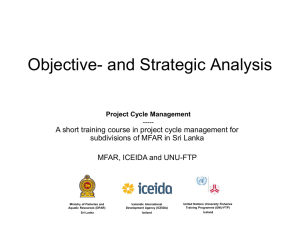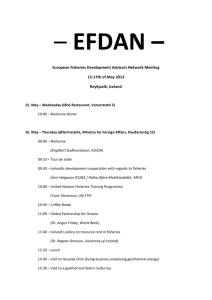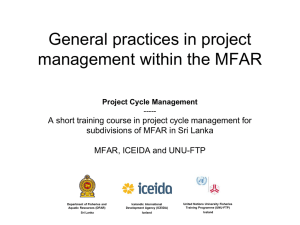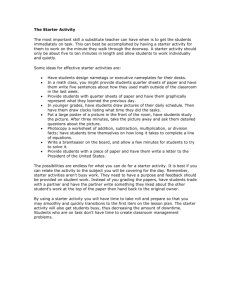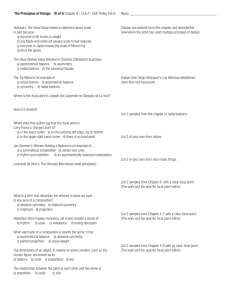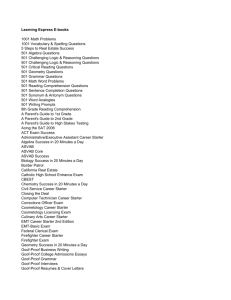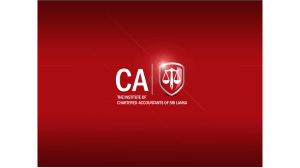Project Cycle Management - United Nations University Fisheries
advertisement
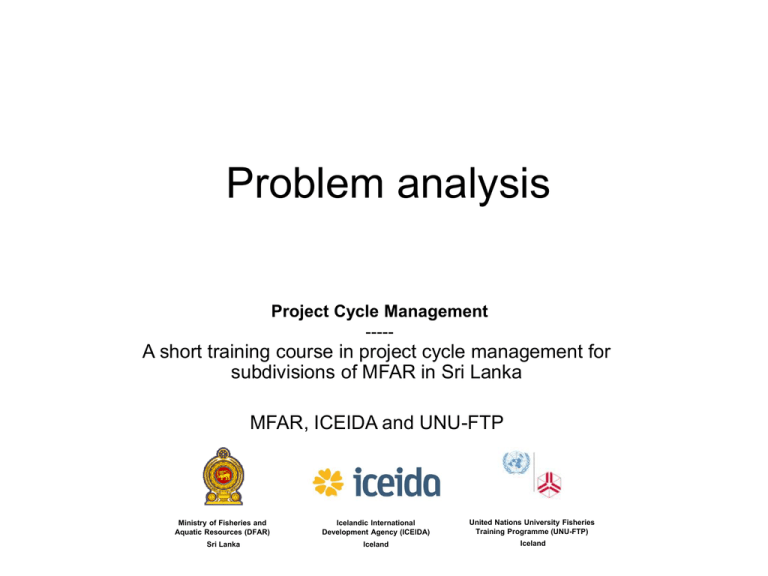
Problem analysis Project Cycle Management ----- A short training course in project cycle management for subdivisions of MFAR in Sri Lanka MFAR, ICEIDA and UNU-FTP Ministry of Fisheries and Aquatic Resources (DFAR) Icelandic International Development Agency (ICEIDA) United Nations University Fisheries Training Programme (UNU-FTP) Sri Lanka Iceland Iceland Content • Problem analysis • How to build a problem tree • A problem tree for post harvest losses Learning objectives • The participants will be able to understand the use of, and apply one of the central tools of, the logical framework approach Problem analysis • A project is meant to help to solve an undesired situation • Analysing problems therefore means to analyse an existing situation • During problem analysis the negative aspects of an existing situation are analysed • Key problems are identified and the causal relationship between them highlighted A problem tree • A hierarchy of causes and effects is being established between the problems identified • Problems which are directly causing the starter problem are placed below it • Problems which are direct effects of the starter problem are positioned above it • Problems that are neither a cause nor an effect are positioned at the same level as the starter problem Structure of a problem tree showing causes and effects Small example of a problem tree How to build a problem tree Problem analysis for post harvest losses Select focal problem Develop the problem tree • Identify immediate and direct causes of the focal problem • Identify immediate and direct effects of the focal problem Construct a problem tree showing the cause and effect relationship between the problems Problem tree • Causes and effects are developed further along the same principle to form the problem tree • Review the problem tree, verify its’ validity and completeness and make any necessary adjustments Reference • European Commission (2004). Project Cycle Management Guidelines. Downloaded 1st March from: http://ec.europa.eu/europeaid/qsm/documents/pcm_man ual_2004_en.pdf

